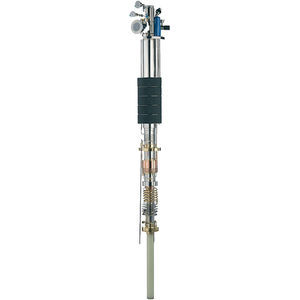
- Production Machines
- Other Manufacturing Equipment
- Superconducting magnet
- Oxford Instruments NanoScience
- Products
- Catalogs
- News & Trends
- Exhibitions
Superconducting magnet Integra

Add to favorites
Compare this product
Characteristics
- Temperature
Min.: 1.5 K
Max.: 300 K
Description
A wide range of superconducting magnet systems up to 20 T, cooled by liquid helium.
Features
• Low-loss cryostat with liquid nitrogen cooled radiation shield and combination LTS/HTS current leads optimised for low helium boil off operation during magnet field ramping and persistent mode use
• Compatible with our range of ³He refrigerators and dilution refrigerators to reach temperatures below 10 mK.
• Compatible with our KelvinoxTLM top-loading 15 mK dilution refrigerator
Options / Accessories
MercuryiPS
The MercuryiPS is an intelligent fully configurable magnet power supply system. It enables automated control of a wide range of superconducting magnets, including NMR, high field, beamline and Vector Rotate magnet systems. MercuryiPS is a bi-polar, high-stability, four quadrant power supply with incorporated quench protection. It includes temperature control of the main high-power sense resistor to prevent output current drift. The MercuryiPS is fully controllable by remote command via TCP/IP, USB, RS232 or optional GPIB.
MercuryiTC
The MercuryiTC is a versatile cryogenic environment controller. In its basic form it includes a single channel high-resolution (24 bit) temperature measurement circuit which supports all the standard cryogenic sensors (ruthenium oxide, cernox, silicon diodes, platinum, thermocouple and RhFe). With the constant voltage mode it enables reliable, accurate temperature measurement using negative temperature sensors (NTC) down to below 250 mK. The base unit enables PID loop configuration control of a single heater output up to 80 Watts (40 V, 2 A).
Catalogs
Other Oxford Instruments NanoScience products
Wet Systems
Related Searches
*Prices are pre-tax. They exclude delivery charges and customs duties and do not include additional charges for installation or activation options. Prices are indicative only and may vary by country, with changes to the cost of raw materials and exchange rates.





